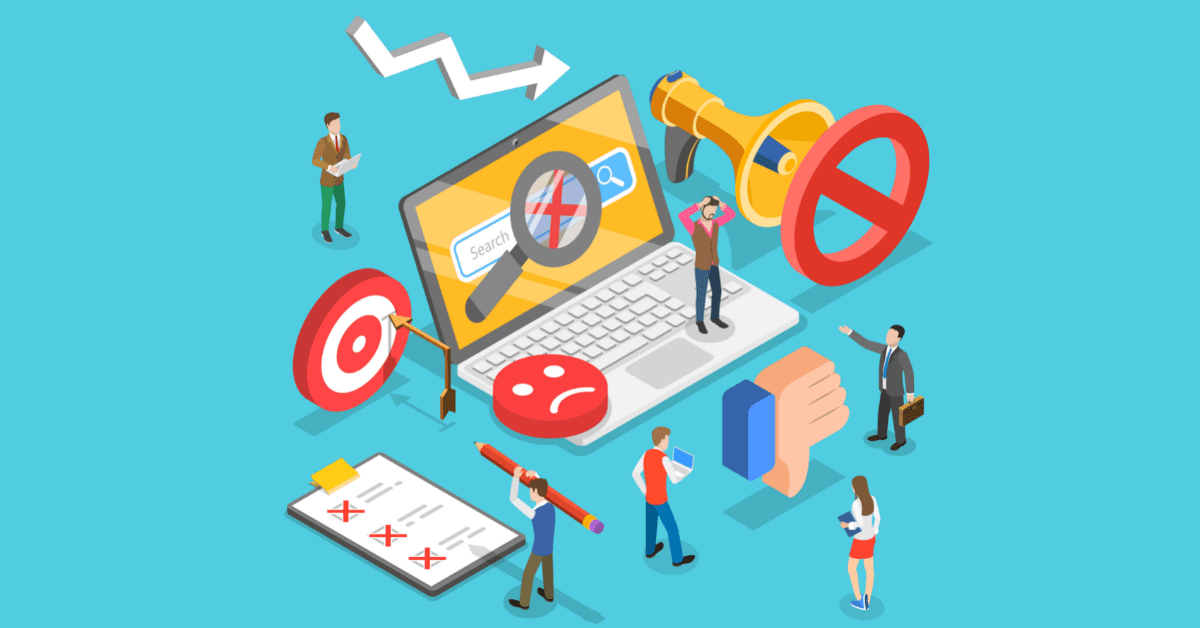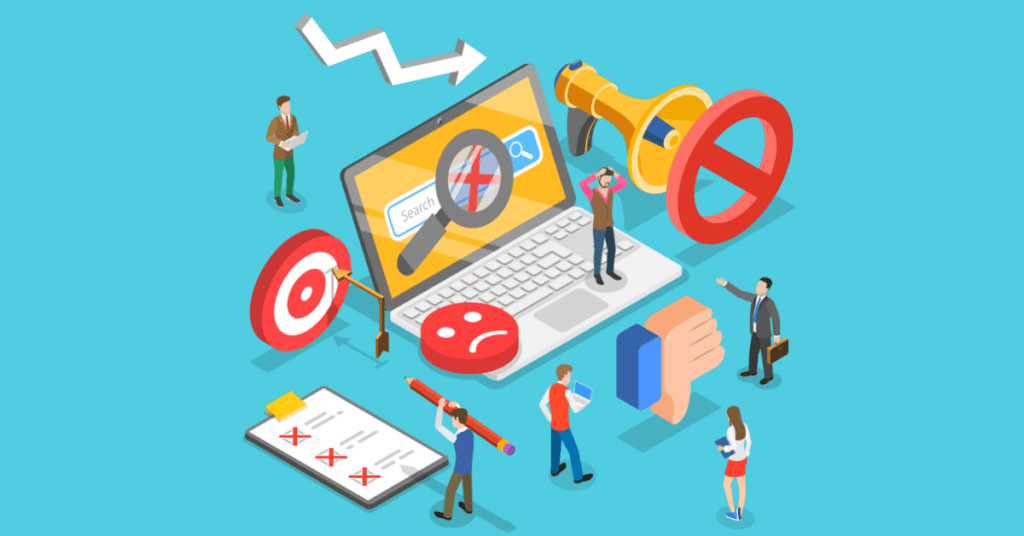The digital marketing space is growing and evolving fast. Marketers need to stay on top of the latest best practices to avoid making digital marketing mistakes.
Digital marketing is booming and for good reason. Brands are trying to catch up to their target audiences who are spending more time online.
Research from U.K.-based Uswitch, a price comparison service, looked at how much time people are spending on their screens. Among the key findings, 85 per cent of Americans have smartphones and they are using these devices primarily to communicate over social media. In 2021, Americans spent, on average, 58 minutes a day or 325 hours a year on Facebook alone.
Of course, it’s not enough to just show up where your target audience is. You have to capture their attention with personalized, highly engaging and relevant content marketing that cuts through all the online noise. It’s a big challenge made even harder by the ongoing change happening in the digital marketing space. Who could have predicted the force TikTok has become in just a couple of years?
Fast fact: TikTok is on track to exceed 1.5 billion users in 2022.
Digital marketing mistakes to avoid in 2022
- Not taking the time to identify the right target audience
- Not setting and tracking realistic marketing campaign goals
- Not having an SEO focused content marketing strategy
- Not prioritizing users' website experience
- Not remarketing
- Not creating a comprehensive social media strategy
Not taking the time to identify the right target audience
While it’s easy to see why brands may want to market to the largest possible audience, not everyone is your customer. The more you think about and define who the people most likely to benefit from your products and services are, the better you can meet their needs with relevant, personalized content and ad campaigns.
Best practices:
- Build a buyer persona for your ideal customer. A buyer persona is a research-based fictionalized version of your target shoppers. It describes who they are, what they want, their challenges, interests, and how they make decisions.
- Use buyer personas to personalize all your marketing and advertising campaigns. This is critical as 66 per cent of customers expect companies to understand their needs and expectations.
- Conduct in-store and online surveys to learn more about your ideal buyers, including demographics, what they do, average income, hobbies and likes.
Not setting and tracking realistic marketing campaign goals
What do you need the campaign to achieve and in what timeframe? How can you test what’s working and what’s not so you can improve and drive impact? Without clear goals and metrics to make sure you stay on track, it’s impossible to know if your campaign is driving results for the brand.
Best practices:
- Set specific goals. Examples are driving clicks and generating leads. Setting goals will help you design digital campaigns to achieve desired outcomes.
- Determine the metrics or key performance indicators that will allow you to track the progress you’re making to achieve your goals.
- Use Google Analytics to measure your key metrics and ROI. These tools are free and effective.
- Establish a budget and stay within it.
- Set deadlines for each goal.
- Include a call to action in your ad campaigns.
Not having an SEO focused content marketing strategy
Search engine optimization (SEO) is what will help you rank on search engines. Content marketing is about creating relevant content your target audience will value. To be successful and drive the right high-intent audiences to your site, the two should work together and be given enough time to generate results. SEO and content marketing take patience and finetuning.
Best practices:
- Understand your target audience: who they are, their needs, interests and how your brand can help them. This will aid you in developing quality content that will bring them to your site.
- Research the keywords that will help you best answer the queries your target audience will use to find what they’re looking for. Incorporating these keywords in your content will help you rank higher on search engine results pages.
- Optimize your title tags for search.
Fast fact: More than 92 per cent of all global searches happen on Google
Not prioritizing users’ website experience
Your website is the face of your brand. It’s what will help you stand out in a growing e-commerce environment – if you create a great customer experience.
Best practices:
- Provide the information customers want and need.
- Create a blog for your website. This is a proven way to drive traffic to your site.
- Use high-quality product images and video, relevant articles and engaging product copy.
- Regularly update content.
- Ensure the web design is easy to navigate and optimized for mobile.
- Invest in speed and performance: 53 per cent of people will leave a web page if it takes more than three seconds to load. Plus, Google Search now determines ranking results by incorporating criteria such as how fast pages load, visual stability and whether pages are optimized for mobile. If your site isn’t fast, stable and mobile friendly, you won’t rank as high as competitors’ websites that check all of those boxes.
- Simplify the checkout process. On average, nearly 70 per cent of U.S. shoppers abandon their shopping cart at checkout largely because the checkout process is too long and complicated. Be sure to provide a variety of online payment options to help people complete a purchase.
Not remarketing
If you aren’t reaching out to past customers, you’re missing an opportunity. Many brands put most of their digital marketing efforts into trying to acquire new customers. While this is important, it’s also much more expensive than reconnecting with people who have already purchased from you or at least indicated that they were leaning in that direction.
Best practices:
- Create a remarketing strategy.
- Launch an email campaign to re-engage with past customers.
- Invest in pay-per-click remarketing ads to remind customers about your brand.
Not creating a comprehensive social media strategy
Put your ideal customer’s characteristics to work to determine the media channels that will best help you reach these buyers and develop ads that resonate with them. Showing up where your customers are is the first step in increasing brand awareness and driving conversions.
Fast fact: 81 per cent of U.S. residents have a social media profile.
Best practices:
- Post high-quality photos people will want to share on your social media channels.
- Build videos into your social media strategy. How-to videos and tutorials, product demo videos, and Q&A videos featuring customers and staff are all opportunities to engage your target customers in a way they will find meaningful.
- Ask customers/social media followers to share your brand content with their networks.
- Use your social platforms to promote online and in-store sales and promotions.
- Evite existing customers and people who have shown interest in products on your website and social media channels to register for a regular newsletter and product updates.
- Invest in paid social ad campaigns.
In today’s online world, consumers have access to all kinds of information. They don’t need brands to push out more information. Instead, digital marketers must find ways to create and distribute content consumers want and will seek out. It’s a harder task but will create a deeper relationship if you stay up to date on digital marketing best practices.






